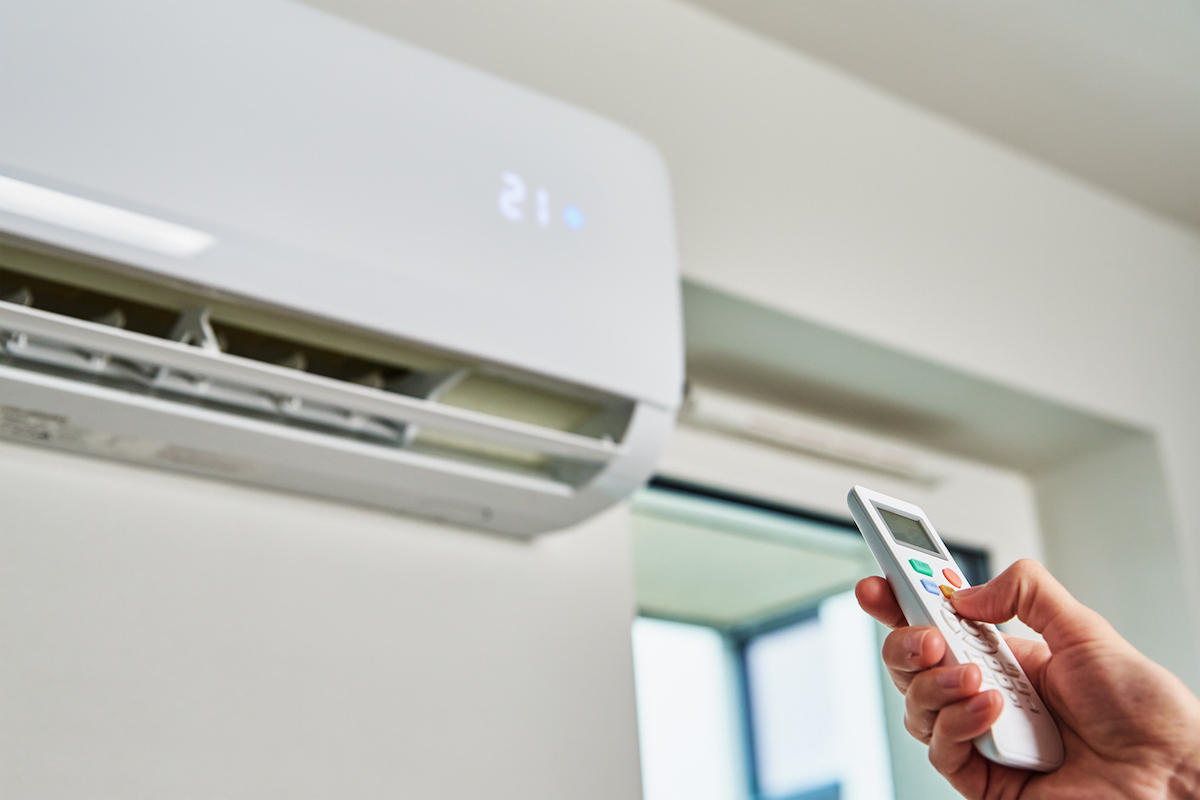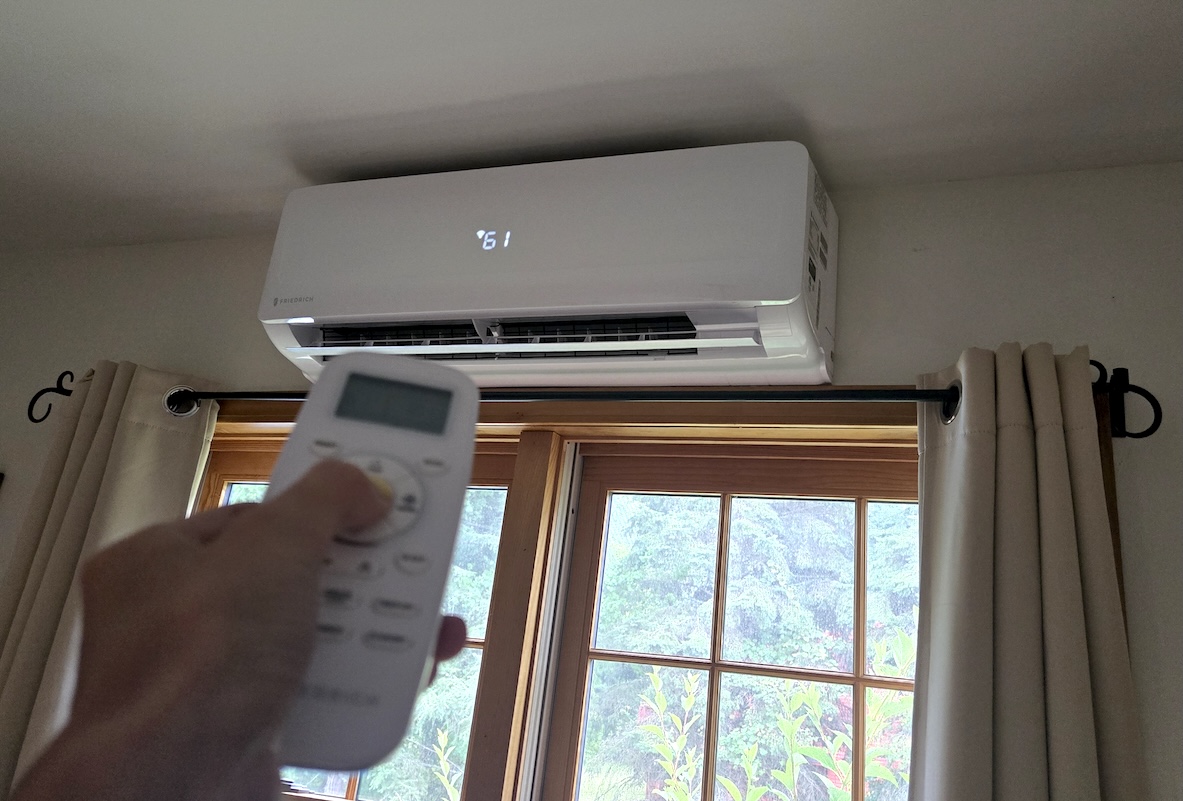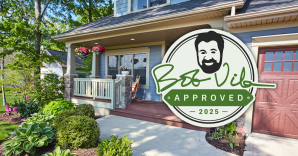

We may earn revenue from the products available on this page and participate in affiliate programs. Learn More ›
Key Takeaways
- Mini-splits heat and cool individual rooms without the need for ductwork.
- They can be 20 to 60 percent more energy efficient than central air systems.
- Choosing the correct size unit is essential for comfort and efficiency.
Mini-split ductless air systems have been around for decades, but they’ve gained major traction in recent years as homeowners look for cost-effective, flexible ways to heat and cool their spaces. Unlike traditional HVAC systems, mini-splits deliver climate control to specific rooms without the need for bulky ductwork.
The benefits are hard to ignore. Mini-splits can be significantly more energy efficient than central air (often by 20 to 60 percent) and they operate with far less noise. They also allow for individual temperature settings in different rooms, so everyone in the household can stay comfortable. On top of that, they typically last longer than standard AC units, with a lifespan that can reach up to 20 years.
Mini-splits are especially useful in homes without central air and in tricky spaces like basements, additions, or sunrooms that never seem to stay at the right temperature. By using an outdoor compressor and condenser connected to indoor air-handling units, they function much like a heat pump, delivering targeted heating and cooling right where you need it.
ESSENTIAL GEAR
With its ability to heat as well as cool, a sleek design, and ultraquiet operation, this Senville ductless air conditioner is one of the best all-around mini-split units on the market. It boasts 24,000 BTUs, which allows it to heat or cool an area up to 1,250 square feet, and is Energy Star certified.
Senville LETO Series Mini Split Air Conditioner Heat Pump, 24000 BTU 208/230V at Amazon for $1,299.99

However, proper sizing is key. An undersized unit will work too hard to keep up, while an oversized unit can waste energy and cycle on and off too frequently. Knowing how to calculate the right size will help you get the most comfort and efficiency from your system, something we’ll cover in detail below.
Why Mini-Split Sizing Is Important
For a mini-split to work at peak efficiency and deliver consistent comfort while keeping energy costs low, it needs to be matched to the size of the space. When purchasing a mini split, the goal is to choose a unit powerful enough to heat or cool efficiently, but not so powerful that it wastes energy.
When a unit is too small, it has to run constantly to try to keep up, often without ever reaching the desired temperature. This extra strain can lead to higher utility bills, faster wear and tear, and more frequent repairs—all while leaving the space uncomfortable.
When a unit is too large, it can “short cycle,” turning on and off in quick bursts because it heats or cools the space too quickly. This wastes energy, increases the risk of breakdowns, and can cause uneven temperatures and poor humidity control. Short cycling also means the system isn’t running long enough to dehumidify properly, which can encourage mold or mildew growth over time.
Mini-split capacity is measured in British thermal units (BTUs), which indicate the amount of heating or cooling a system can deliver. While larger rooms require higher BTU ratings, the right choice also depends on factors like insulation, ceiling height, and climate.
Mini-Split Sizing Chart
Once you understand the factors that influence capacity, you can use BTUs to determine which of the many mini split sizes is best for your space. In general, a higher BTU rating allows a system to handle a larger area or a room with greater heating and cooling demands. Selecting the correct capacity will help your mini-split maintain comfort efficiently while keeping energy costs in check.
Use the mini split size chart below to match your room size with the recommended BTU capacity for optimal performance.
| Room Size (square feet) | BTU Capacity |
| 150–250 | 6,000 |
| 250–300 | 7,000 |
| 300–350 | 8,000 |
| 350–400 | 10,000 |
| 400–500 | 12,000 |
| 500–600 | 15,000 |
| 600–700 | 18,000 |
| 700–950 | 24,000 |
| 950–1,200 | 30,000 |
| 1,200–1,500 | 36,000 |
The price of a mini-split unit depends largely on its size. The most common size (12,000 BTUs) typically costs between $700 and $3,200. It’s also worth evaluating the unit’s Seasonal Energy Efficiency Ratio (SEER), which measures how much energy the system uses over the course of a year. The higher the SEER rating, the more efficient the unit will be, which can translate to lower utility bills over time.
How to Calculate the Right Mini-Split Size

Determining the correct size for a mini-split is a straightforward process that starts with measuring the space and ends with matching it to the right BTU capacity. While HVAC professionals who install mini splits can perform a detailed load calculation, homeowners can get a solid estimate by following these steps.
Measure the room in square feet
Measure the length and width of the room, then multiply those numbers to get the square footage. If the room is round, measure the distance from the wall to the center of the room, multiply that number by itself, and then multiply the result by 3.14159 (pi). This calculation gives you the total floor area that the mini-split will need to heat or cool.
Convert square footage to BTUs
Once you have the square footage, multiply it by 25 to estimate the required BTU capacity. For example, if a room is 24 feet by 23 feet, multiply to get 552 square feet. Then multiply 552 by 25 to get 13,800. In this case, you’d round up to a 14,000 BTU mini-split unit to ensure adequate heating and cooling.
Consider other factors that affect mini-split sizing
Room size is just the starting point. Several other variables can influence how powerful your mini-split needs to be.
- Climate: In hot climates where temperatures creep above 90 degrees Fahrenheit, you may need to increase the BTU rating by 30 percent or more to ensure the system can keep up.
- Ceiling height: Higher ceilings increase the total air volume in a room. If your ceiling is taller than the standard 8 feet, add at least 20 percent to your BTU estimate.
- Age and insulation: Older homes with poor insulation lose heated or cooled air more quickly, requiring about 30 percent more BTU capacity. Newer homes with effective insulation may need fewer BTUs for the same space.
- Windows, doors, and sunlight: Large or leaky windows and doors, as well as rooms with direct sun exposure, can increase cooling needs.
- Heat sources: Kitchens with ovens or stoves, or rooms with multiple electronic devices, may need additional capacity to offset the extra heat.
- Occupancy and flooring: Spaces with more people generate more body heat. Carpeted rooms tend to retain heat better than those with hardwood or tile floors.
